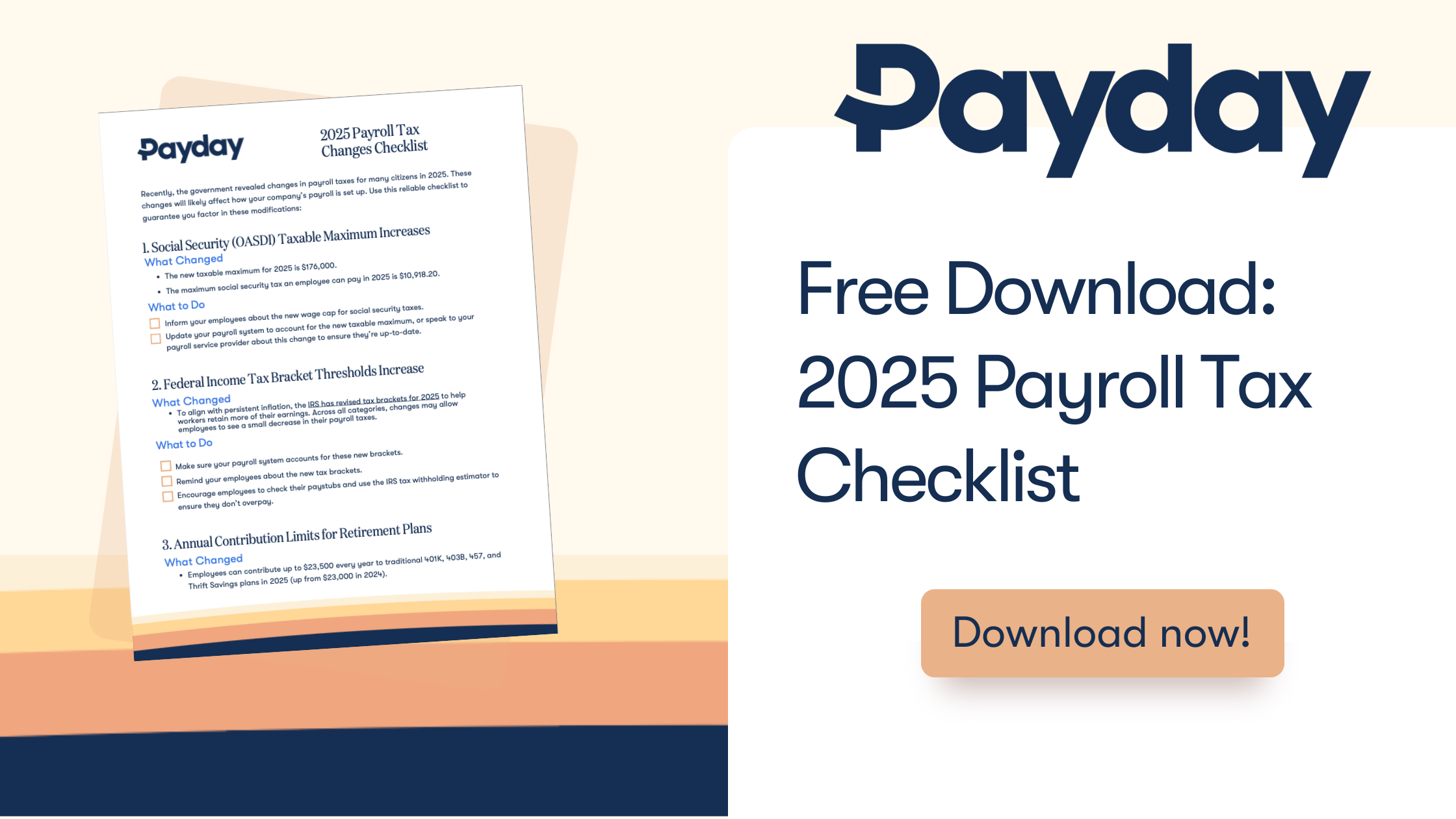As the year winds down, it’s time to tackle year-end payroll and tax filing. Whether you’re a small business or a large corporation, a comprehensive payroll checklist is essential to avoid errors. Staying on top of changes to tax laws, tax forms, and withholdings is crucial, along with ensuring employee information accuracy and meeting filing deadlines.
It’s a big job, and mistakes can be costly.
Here’s a year-end payroll checklist with tips to help make your process smoother this year.
Key Year-End Payroll Tasks to Complete
Add these critical items to your to-do list for a successful year-end payroll.
1. Verify Employee Information
Outdated addresses, incorrect Social Security numbers, and taxing jurisdictions can lead to errors, delays, and even fines. Ensure everything is accurate and up-to-date.
Ask employees to verify their information and cross-reference it with your payroll system. Payroll software can flag discrepancies and simplify this step.
2. Review and Update Tax Withholdings
Tax rates and withholding regulations change, and employees may update their filing status, benefits plans, or 401(k) contributions. Review all withholding data for each payroll record and update as needed.
3. Process Final Payroll Runs
When handling final payroll runs, pay close attention to year-end bonuses or other benefits. Avoid mistakes like double-paying bonuses or miscalculating taxes on holiday pay or overtime.
4. Send Out Year-End Forms
W-2s for employees and 1099s for independent contractors must be distributed by January 31 to comply with IRS requirements.
5. Reconcile Payroll Reports
Compare payroll reports with bank statements and financial records to catch any mistakes from the year. Specifically, ensure payroll expenses match your general ledger, bank statements, and tax records.
If mistakes are found, investigate and correct them. Document any discrepancies to defend against potential future audits and update records to avoid recurring issues.
Tips for Streamlining the Year-End Payroll Process
Create a Detailed Year-End Checklist
A well-organized checklist will ensure you stay on track and don’t skip any important steps. While your checklist may look different, here is a sample list of the tasks you need to consider including:
Personal and Company Preparation
- Verify all employee information is current
- Collect and organize all payroll records for the tax year
- Review and update payroll software/system settings for the new tax year
Compensation and Earnings Review
- Reconcile total wages for each employee
- Confirm the accuracy of reporting
- Calculate year-to-date earnings for each employee
Tax Form Preparation
- Prepare W-2 forms for full-time employees
- Prepare 1099 forms for independent contractors
- Verify federal tax withholding amounts
- Check state and local tax withholding accuracy
- Ensure all required tax identification numbers are correct
Reporting and Filing Requirements
- Prepare quarterly payroll tax returns (Form 941)
- Collect and complete annual federal unemployment tax return (Form 940)
- Prepare state unemployment tax reports
- Verify employer tax liability calculations
Compliance and Documentation
- Review compliance with minimum wage regulations
- Check overtime calculations and compliance
- Verify the correct classification of workers (employee vs. contractor)
- Audit payroll records for any discrepancies
Distribution and Communication
- Distribute W-2 forms to employees
- Prepare communication to employees about tax documents
- Create copies of all tax forms for company records
Financial Reconciliation
- Reconcile payroll expenses with accounting records
- Verify total payroll tax expenses match financial statements
- Prepare documentation for your accountant
- Set aside funds for potential tax payments
Technology and Security
- Back up all payroll and tax-related electronic records
- Ensure data security for sensitive employee information
- Test electronic filing systems
Final Review
- Conduct an audit of all year-end payroll documents
Utilize Payroll Software for Automation
Automated payroll software can save time and reduce errors. Rather than completing all these tasks manually, streamline the process with software that can:
- Automate tax calculations.
- File documents electronically.
- Schedule reminders for critical tasks.
- Distribute W-2s and 1099s automatically.
Schedule Year-End Audits
A year-end audit is your final opportunity to catch mistakes, giving you peace of mind as you enter the new year.
Communicate Clearly with Employees
Throughout the process, communicate year-end deadlines and expectations with employees. If you have an employee portal, encourage employees to review their records and update information before you process year-end payroll and tax forms. Templates for year-end updates and W-2 distribution can help streamline this communication.
Common Year-End Payroll Mistakes to Avoid
Even with thorough planning, it’s easy to make mistakes. Here are some of the most common ones:
- Missing Tax Filing Deadlines: Missing deadlines can lead to penalties and interest charges.
- Overlooking Tax Rate Updates: Failing to update tax rates or deduction limits can result in incorrect withholdings.
- Misclassifying Year-End Bonuses: Ensure year-end bonuses are classified correctly to avoid tax complications.
- Not Retaining Payroll Records: Keep copies of payroll reports, W-2s, and 1099s for future reference.
Reduce Your Stress This Year
With preparation and a solid checklist, you can proactively manage your year-end payroll process and reduce stress. It’s critical to get it right the first time to avoid rework and complications.
Contact Payday today to simplify your year-end payroll and start the new year with confidence.


